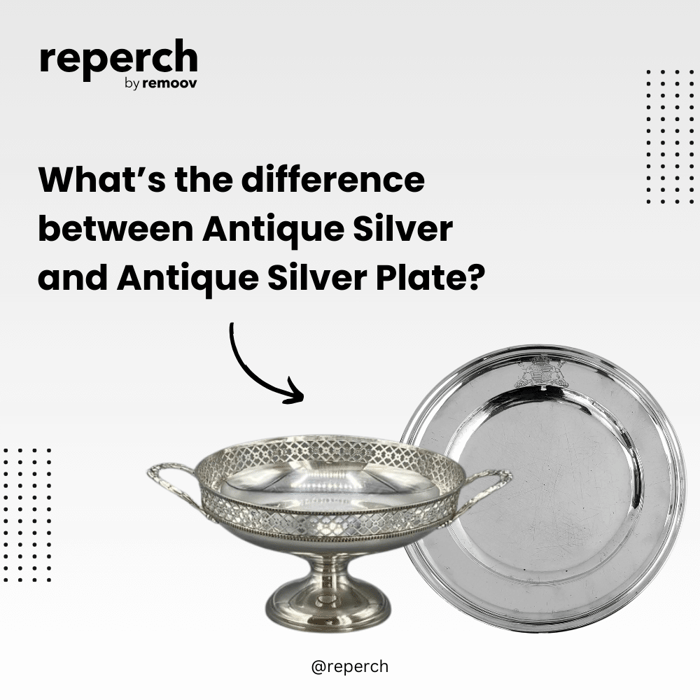Collecting silver has become a popular hobby, especially since the pandemic. Whether you’re a novice collector or have been at it for years, understanding the difference between antique silver and antique silver plates is crucial for building an authentic and valuable collection.
What Is Antique Silver?
Antique silver refers to items made of solid silver, usually over 100 years old. These pieces are highly sought after by collectors due to their rarity, unique patina, and historical significance. Made primarily from sterling silver—an alloy containing 92.5% pure silver and 7.5% other metals like copper—antique silver items are durable and retain a higher intrinsic value.
Identifying Antique Silver:
Hallmarks: Look for stamps such as "Sterling," "925," or a lion hallmark. These marks indicate the purity and authenticity of the silver.
Patina: Over time, silver develops a distinct patina, adding character to the piece.
Weight and Feel: Solid silver is denser and heavier compared to silver-plated items.
What Is Antique Silver Plate?
Antique silver-plated items, on the other hand, are made from a base metal like copper, brass, or nickel, coated with a thin layer of silver. This method was developed in the 18th century as an affordable alternative to solid silver, making silverware and decorative items more accessible to the general public.
Identifying Silver Plate:
Hallmarks: Look for markings like "EPNS" (Electroplated Nickel Silver), "EPBM" (Electroplated Britannia Metal), or simply "Silver Plate."
Magnet Test: A strong magnet can help distinguish between solid silver and plated items—solid silver is not magnetic.
Flaking and Discoloration: Silver-plated items may show signs of wear, with the base metal visible where the silver layer has worn off.
Value and Collectibility: Solid Silver vs. Silver Plate
The value of antique silver far exceeds that of silver plate due to the higher silver content and historical significance. Sterling silver can be melted down and sold based on its weight in silver, making it a more secure investment. On the other hand, silver-plated items derive their value from craftsmanship, age, and rarity rather than the silver content itself.
While silver-plated items can still be beautiful and collectible, they generally do not appreciate in value like solid silver. However, they can be an excellent choice for those looking to enjoy the look and feel of silver without the higher price tag.
Caring for Your Antique Silver and Silver Plate
Both solid silver and silver-plated items require proper care to maintain their beauty and prevent tarnishing. Here are some tips:
Regular Cleaning: Use a soft cloth and a mild detergent for routine cleaning. For silver plates, a silver polishing cloth can help maintain the finish.
Avoid Abrasive Materials: Never use harsh chemicals or abrasive materials, as they can damage the surface.
Proper Storage: Store your silver in a cool, dry place, preferably wrapped in acid-free tissue or a soft cloth to prevent tarnishing.
Final Thoughts
Whether you're investing in the timeless elegance of antique silver or the more affordable charm of silver-plated items, understanding the difference is key to making informed decisions. Authentic antique silver will always hold more value, both financially and historically, but silver plate offers its own appeal for collectors on a budget. Regardless of your choice, caring for your silver will ensure it remains a cherished part of your collection for years to come.
Explore More at Reperch:
At Reperch, we offer a wide selection of antique silver and silver-plated items. Browse our collection today to find the perfect piece to add to your collection.








